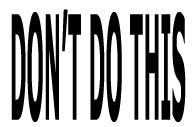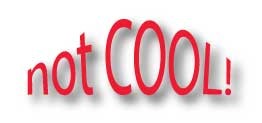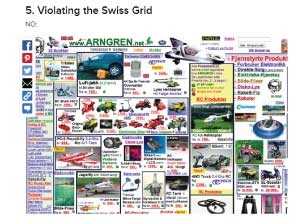You’re about to enter The Design Process.
You’ve decided you need to redesign your direct mail brochure (or your website or your logo or whatever) … and you’re not a designer. So how do you begin? You have some graphics software and a few ideas. You’re thinking you can put something together on your own. You’re wondering whether it would be better to hire a professional – but what will that cost? What should you do?
I can help you decide how to proceed.
The Design Process
On the surface, designing a brochure seems like a pretty easy process – just pick a few fonts and pictures, choose some colors, play with all those fun special effects, write up some catchy, hopefully not corny, content, and come up with some kind of arrangement of elements on the page. Good to go, right? Everything you need is right there in the software, isn’t it? How hard can it be?
Well, as a professional designer, I can assure you that designing a brochure is not a task to be taken lightly.
Amateur Mistakes
If you don’t know the “rules” of design, you don’t know when you’re making mistakes. I can’t tell you how many DIY brochures I’ve seen that are so obviously DIY. People show me what they’ve made so proudly and I just want to cry.
A DIY dead giveaway is proportionally distorted visuals like the following:
Unconstrained Proportions. A typical amateur error is trying to fit a square or portrait visual into a rectangular or landscape space by grabbing the corner or edge re-size handle and stretching or squeezing the photo until it fills your desired area. Please! Someone make this stop!
The proportions here are obviously off. Look at the twist and stretch of the birds’ bodies. Unconstrained proportions really drive me nuts … but what’s worse for you is that distorting your visuals this way makes your media piece look unprofessional.
Here’s a helpful tip for future reference when you’re tweaking a visual element. To maintain the aspect ratio, in other words, to constrain the proportions so that the width remains relative the height as the visual is resized, just hold down your Shift Key while dragging a resize handle. Then crop the enlarged image to fit into the designated space.
Maybe no one on your staff (or in your household) will have the nerve to tell you that your design … is awful. Don’t find out the hard way. Don’t wait until your bad design is discovered and immortalized in a graphics article like this one!
Please don’t stretch typefaces either! Or use all CAPS with a decorative typeface. Have some respect the typeface! The best typographers spend months or longer designing a typeface, tweaking to perfection every proportion and gesture of every letter and symbol and pairing of characters. Then someone (surely not you!) comes along and stretches the characters all out of shape … oh, it’s just so wrong …
And please …
Experimentation without Interpretation. As an untrained designer, you may jump blindly into your basic desktop graphics program and just start experimenting, stretching typefaces, pasting in clip art and sliding multiple repeated or unrelated images around the canvas until you happen onto an arrangement that seems to work … or at least you think it works.
The result is often a piece with interesting characteristics that don’t really serve a purpose, and perhaps even cloud your intended message. Don’t curve text into arcs or apply heavy shadowing just because you think it looks cool.
There should be a justifiable reason for using special effects. It should support the message of the piece in an intuitively understandable way. Graphic design is not merely creating conglomerations of cool things that can be done with graphics software. Well, what is graphic design then? Ok, I hear you. Here’s an entertaining video that explains the field.
Reason 1 to Hire a Professional Designer
Graphic design is an artistic exercise in problem solving. Using the psychology of layout, visual interpretation, and an understanding of the way we perceive information, a designer will compose a layout of elements on a grid that is balanced and conveys your intended message without extraneous distraction.
I begin the design process with thorough research to define the purpose and function of your piece, in this case, your marketing brochure. You have to tell me what message you want to convey. Tell me if you want to tell a story or market a service or sell a product or get someone to visit your website or register for an event. What is its purpose? Then describe your client demographic. Who is it you’re trying to reach? Once the function and audience for the piece are established, only then do I begin to brainstorm the issues of form and design that will call your prospects to action.
Crowding the Canvas. Amateur designers tend to cram too many ideas into one layout, thinking hey, I have several good concepts, why not try to work them all in?
A design piece can fail simply because there is just too much going on. Too many font choices. Too many colors. Poor images. No landing place for your eyes. No logical progression path through the information for your eyes to follow. Too many messages, so much visual noise that the viewer is overwhelmed and fails to understand your message, or worse yet, ignores it and moves on.
Reason 2 to Hire a Professional Designer
We know when to stop. We know when “it works.” We have been trained in the art of a balanced layout, the importance of negative (white) space in a composition, and the selection of typography and colors. The resulting piece should be well planned and well executed and successfully communicate your intended message.
Technical Deficits. You may spend hours working on a design, getting the layout as close to perfect as you can, only to discover the commercial printer can’t use the file you submitted because you used the wrong kind of software and your file is in the wrong format. They are talking about outlining your fonts and low resolution pixilation and file incompatibility and you have no idea what any of that means.
You are seeing the countless hours you spent tweaking your new marketing brochure going right down the tubes.
Without the requisite software skills and knowledge of print production, your result may be a piece that is both difficult to re-create and costly to print. Use the wrong kind of graphics software and that leads to even more trouble–because the commercial printer may not be able to use your file which leads to …
Reason 3 to Hire a Professional Designer
As professional designers, we are proficient in the use of complex industry-standard print design software, understand the technical requirements for creating files that can be commercially printed and can work artistically and efficiently to meet your deadlines–saving you time and money in the long run.
Cost Effectiveness
DIY may not necessarily be the best or most cost effective answer for you. It may take you weeks to do what a professional designer can do in less time. Likewise, you may whip up in a few minutes what really requires some in-depth professional time, research, and planning.
So if you have enough design knowledge of layout and composition, you understand the pre-flight process for commercial printing, you know the difference between raster and bitmap, you know how to constrain proportions, then maybe you could DIY.
To be on the safe side, hire a professional to ensure your marketing collateral makes that crucial great first impression, so potential customers see you as a professional organization.
Have you ever done a design job yourself and lived to regret it?







Pingback: Ebook and Writing Samples - Roz Swartz Williams | Lot:21 Design Freelance Writing and Graphic Design Services for Hire